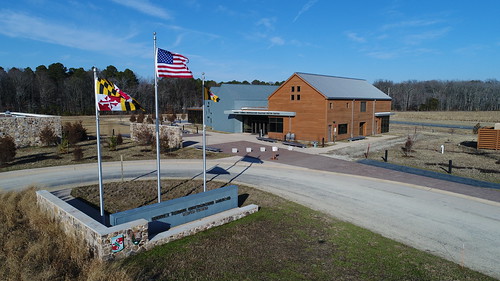What’s in a Name? Many Maryland State Parks Have Notable Namesakes
 From Assateague Island to the Youghiogheny Wild River Natural Environmental Area, Maryland’s public lands are named after a lot of geographic, historical, and cultural landmarks. Several parks are named after Marylanders who had a hand in their creation or made notable contributions to the Old Line State that others found worthy of remembrance.
From Assateague Island to the Youghiogheny Wild River Natural Environmental Area, Maryland’s public lands are named after a lot of geographic, historical, and cultural landmarks. Several parks are named after Marylanders who had a hand in their creation or made notable contributions to the Old Line State that others found worthy of remembrance.
Here are a few of their stories.
Helen Avalynne Tawes Garden, Anne Arundel County
Helen Tawes was the wife of Maryland Governor J. Millard Tawes—who would also serve as the first Secretary of the Maryland Department of Natural Resources in 1969. But Helen would make a name for herself. While her husband was running for governor in 1958, Helen Tawes wrote a modest recipe booklet that went on to sell 12,000 copies while promoting his campaign. While First Lady of Maryland, Tawes wrote a cookbook, created a crab cake sandwich recipe used at the 1964 World’s Fair, and air-mailed a pot of terrapin soup to the turtle soup-loving British Prime Minister Winston Churchill, who sent a letter back to her with thanks for the tasty gift.

Helen Tawes plants a tree with her husband, Governor J. Millard Tawes, at the Tawes Garden dedication in 1977.
Helen Avalynne Tawes Garden has a variety of gardens representing different ecosystems from around the state, and is located next to the Tawes State Office Building in Annapolis that is named after her husband.
Bill Burton Fishing Pier State Park, Talbot and Dorchester Counties
Ignoring the doctors that told him he’d have to work a desk job, Bill Burton spent more than 50 years as Maryland’s best-known outdoors reporter. After an honorable discharge from the Navy due to a heart condition, he studied journalism and worked at a variety of newspapers before spending decades as the Baltimore Evening Sun’s outdoors reporter. Among the many topics Burton wrote about was the old U.S. 50 bridge across the Choptank River, which he argued should be kept and modified into a fishing pier after a new bridge opened. The bridge became a state park in 1987, and was named in honor of Burton in 2009. Today, visitors can enjoy fishing and crabbing from the two piers, grilling in the picnic area, and hiking on the trail.
Martinak State Park, Caroline County
What was once a peaceful retreat for a veteran is now a peaceful retreat for all. After serving in the military during World War I, George Martinak found work as a government printer and enjoyed camping in his free time. After a wonderful camping experience with fellow veterans near the Choptank River, he bought 10 acres there in 1928. In subsequent years he bought an additional 89 acres and built a cabin that still stands today. In 1964, he donated the land to the state so that all could enjoy the forests and river views that he loved. While visitors can’t stay in Martinak’s original 1931 cabin, they can stay in several (much newer) cabins or the park’s 63-site campground.
Torrey C. Brown Rail Trail, Baltimore County
Why choose between being a professor, a doctor, and a state legislator, when you can be all three? After growing up in Illinois and graduating from college, Torrey C. Brown moved to Baltimore to study medicine at Johns Hopkins University. After serving in the U.S. Public Health Service, he became a medical professor at Johns Hopkins and represented Baltimore City in the House of Delegates. He would go on to serve more than a decade as the Secretary of the Department Natural Resources, overseeing the department that manages Maryland’s state parks. In 2007, the Northern Central Railroad Trail was renamed to honor Dr. Brown’s service to the state, and the 20-mile long, ADA-accessible trail is used by hikers, joggers, cyclists, and horseback riders.
Harriet Tubman Underground Railroad State Park, Dorchester County
From humble beginnings, Harriet Tubman made herself into a true American hero. Born enslaved in Dorchester County, Harriet Tubman grew up surrounded by the beauty of the landscape and the horrors of slavery. In 1849, Tubman ventured north to freedom, and would return to Maryland at least 13 times to rescue 70 others from slavery. She would go on to serve as a spy, scout, and nurse for the Union Army in the Civil War, and would continue to advocate for the rights of women and African-Americans long after the war’s end. The park’s location is within a few miles of where she was born and where she grew up enslaved, and the park’s layout is symbolic of her journeys north, from the walking path through the Legacy Garden to the architecture of the Visitor Center.
Adam Larson is a Seasonal Park Ranger with the Maryland Park Service. Article appears in Vol. 24, No. 4 of the Maryland Natural Resource magazine, fall 2021.


